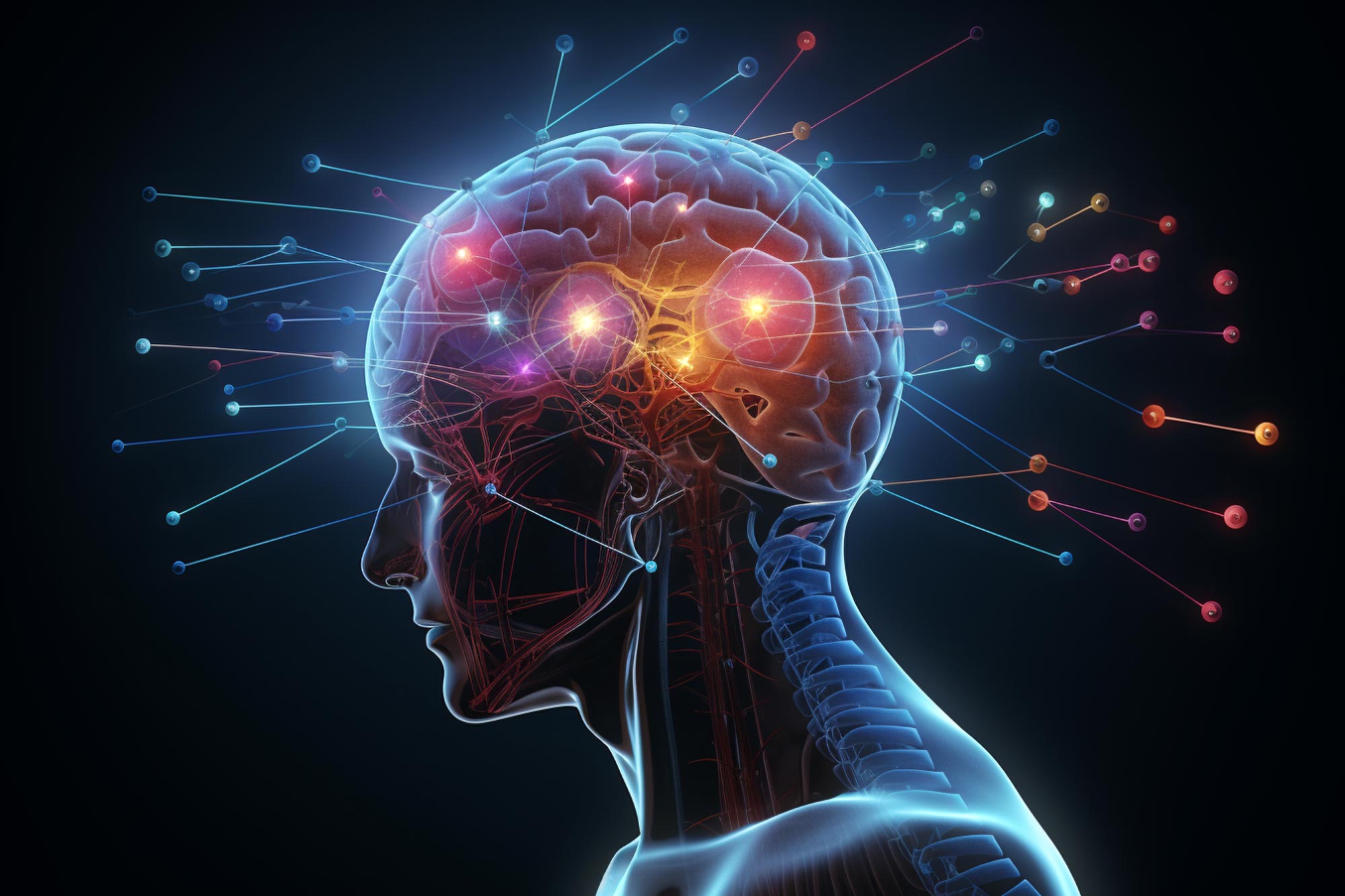Un equipo de investigación dirigido por Stanford Medicine descubrió que la estimulación magnética transcraneal (TMS), utilizada para tratar la depresión severa, funciona al revertir las señales cerebrales anormales. El estudio también reveló un biomarcador potencial para diagnosticar la depresión: el flujo inverso de la actividad neuronal entre áreas clave del cerebro.
Aplicar poderosos pulsos magnéticos al cráneo para estimular el cerebro puede aliviar rápidamente los síntomas en muchas personas severamente deprimidas para quienes los tratamientos tradicionales no han sido efectivos.
Sin embargo, cómo la estimulación magnética transcraneal, el nombre de este tratamiento, alivia la depresión sigue siendo un misterio. Ahora, una nueva investigación realizada por científicos de Stanford Medicine revela que esta terapia funciona invirtiendo la dirección de las señales cerebrales anormales.
Los hallazgos también sugieren que los flujos de retorno de la actividad neuronal entre áreas clave del cerebro podrían usarse como biomarcadores para ayudar a diagnosticar la depresión.
«La principal hipótesis ha sido que la TMS podría cambiar el flujo de la actividad neuronal en el cerebro», dijo Anish Mitra, MD, Ph.D., becario postdoctoral en psiquiatría y ciencias del comportamiento. “Pero para ser honesto, era bastante escéptico. Yo quería intentarlo.
Mitra tenía la herramienta justa para hacerlo. Como estudiante de posgrado en la Universidad de Washington en Saint Louis, en el laboratorio de Mark Raichle, MD, desarrolló una herramienta matemática para analizar la resonancia magnética funcional o[{» attribute=»»>fMRI — commonly used to locate active areas in the brain. The new analysis used minute differences in timing between the activation of different areas to also reveal the direction of that activity.
In the new study recently published in the Proceedings of the National Academy of Sciences, Mitra and Raichle teamed up with Nolan Williams, MD, associate professor of psychiatry and behavioral sciences, whose team has advanced the use of magnetic stimulation, personalized to each patient’s brain anatomy, to treat profound depression.
The FDA-cleared treatment, known as Stanford Neuromodulation Therapy, incorporates advanced imaging technologies to guide stimulation with high-dose patterns of magnetic pulses that can modify brain activity related to major depression. Compared with traditional TMS, which requires daily sessions over several weeks or months, SNT works on an accelerated timeline of 10 sessions each day for just five days.
“This was the perfect test to see if TMS has the ability to change the way that signals flow through the brain,” said Mitra, who is lead author of the study. “If this doesn’t do it, nothing will.”
Raichle and Williams are senior authors of the study.
Timing is everything
The researchers recruited 33 patients who had been diagnosed with treatment-resistant major depressive disorder. Twenty-three received SNT treatment, and 10 received a sham treatment that mimicked SNT but without magnetic stimulation. They compared data from these patients with that of 85 healthy controls without depression.
When they analyzed fMRI data across the whole brain, one connection stood out. In the normal brain, the anterior insula, a region that integrates bodily sensations, sends signals to a region that governs emotions, the anterior cingulate cortex.
“You could think of it as the anterior cingulate cortex receiving this information about the body — like heart rate or temperature — and then deciding how to feel on the basis of all these signals,” Mitra said.
In three-quarters of the participants with depression, however, the typical flow of activity was reversed: The anterior cingulate cortex sent signals to the anterior insula. The more severe the depression, the higher the proportion of signals that traveled the wrong way.
“What we saw is that who’s the sender and who’s the receiver in the relationship seems to really matter in terms of whether someone is depressed,” Mitra said.
“It’s almost as if you’d already decided how you were going to feel, and then everything you were sensing was filtered through that,” he said. “The mood has become primary.”
“That’s consistent with how a lot of psychiatrists see depression,” he added. “Even things that are quite joyful to a patient normally are suddenly not bringing them any pleasure.”
Changing the flow
When depressed patients were treated with SNT, the flow of neural activity shifted to the normal direction within a week, coinciding with a lifting of their depression.
Those with the most severe depression — and the most misdirected brain signals — were the most likely to benefit from the treatment.
“We’re able to undo the spatiotemporal abnormality so that people’s brains look like those of normal, healthy controls,” Williams said.
A biomarker for depression
A challenge of treating depression has been the lack of insight into its biological mechanisms. If a patient has a fever, there are various tests — for a bacterial or viral infection, for example — that could determine the appropriate treatment. But for a patient with depression, there are no analogous tests.
“This is the first time in psychiatry where this particular change in a biology — the flow of signals between these two brain regions — predicts the change in clinical symptoms,” Williams said.
Not everyone with depression has this abnormal flow of neural activity, and it may be rare in less severe cases of depression, Williams said, but it could serve as an important biomarker for triaging treatment for the disorder. “The fMRI data that allows precision treatment with SNT can be used both as a biomarker for depression and a method of personalized targeting to treat its underlying cause,” he said.
“When we get a person with severe depression, we can look for this biomarker to decide how likely they are to respond well to SNT treatment,” Mitra said.
“Behavioral conditions like depression have been difficult to capture with imaging because, unlike an obvious brain lesion, they deal with the subtlety of relationships between various parts of the brain,” said Raichle, who has studied brain imaging for more than four decades. “It’s incredibly promising that the technology now is approaching the complexity of the problems we’re trying to understand.”
The researchers plan to replicate the study in a larger group of patients. They also hope others will adopt their analytic technique to uncover more clues about the direction of brain activity hidden in fMRI data. “As long as you have good clean fMRI data, you can study this property of the signals,” Mitra said.
Reference: “Targeted neurostimulation reverses a spatiotemporal biomarker of treatment-resistant depression” by Anish Mitra, Marcus E. Raichle, Andrew D. Geoly, Ian H. Kratter and Nolan R. Williams, 15 May 2023, Proceedings of the National Academy of Sciences.
DOI: 10.1073/pnas.2218958120
The study was funded by a Brain and Behavior Research Foundation Young Investigator Award, the NIMH Biobehavioral Research Awards for Innovative New Scientists award, Charles R. Schwab, the David and Amanda Chao Fund II, the Amy Roth Ph.D. Fund, the Neuromodulation Research Fund, the Lehman Family, the Still Charitable Trust, the Marshall and Dee Ann Payne Fund, the Gordie Brookstone Fund, the Mellam Family Foundation, and the Baszucki Brain Research Fund.

«Maven de internet exasperantemente humilde. Comunicadora. Fanático dedicado al tocino.»
También te puede interesar
-
Dormir bien el fin de semana puede reducir en una quinta parte el riesgo de sufrir enfermedades cardíacas: estudio | Cardiopatía
-
Una nueva investigación sobre la falla megathrust indica que el próximo gran terremoto puede ser inminente
-
Caso de Mpox reportado en la cárcel del condado de Las Vegas
-
SpaceX lanzará 21 satélites Starlink en el cohete Falcon 9 desde Cabo Cañaveral – Spaceflight Now
-
SpaceX restablece el lanzamiento pospuesto de Polaris Dawn, una misión espacial comercial récord

